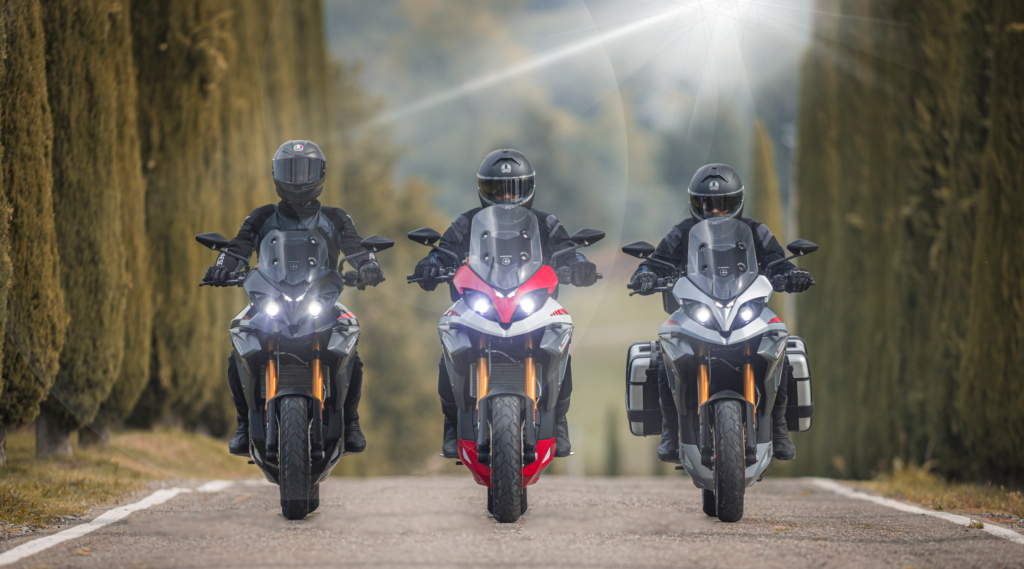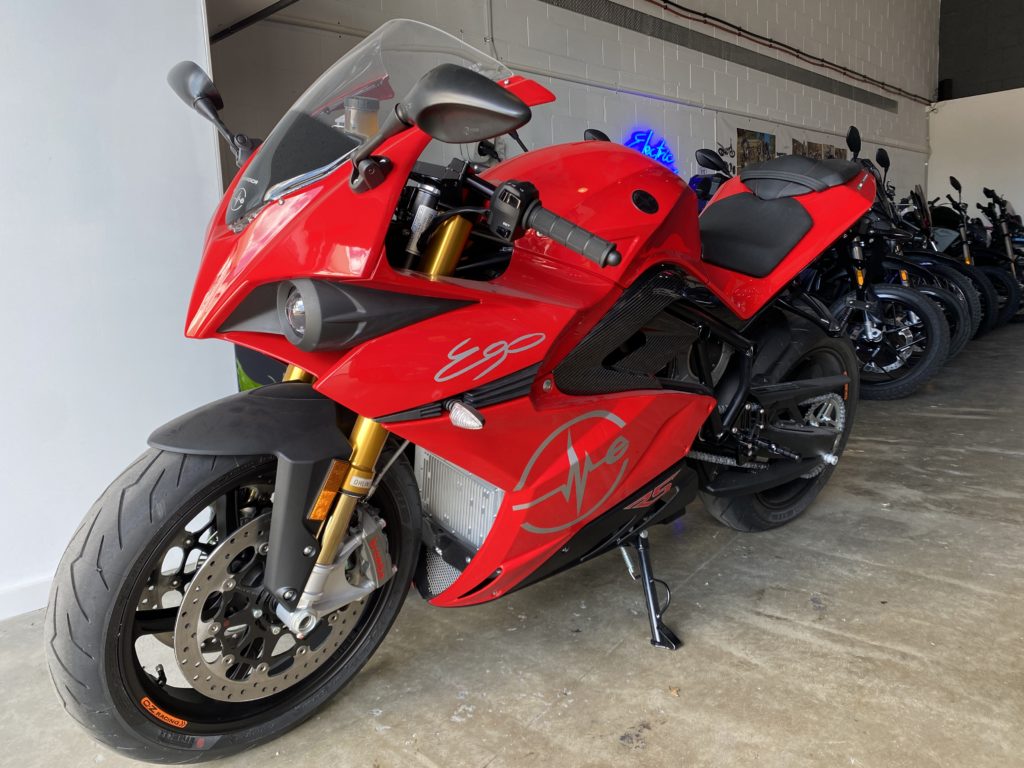We figured out a simple way to work out how many kilometers a solar power system can generate for an electric motorcycle.
Electric motorcycles can be both environmentally responsible and reduce your daily fuel costs. If you’re an environmentally conscious person and you’ve installed solar power in your home, you have an untapped gold mine of energy to power your electric motorcycle.
But how far can solar charging really take you, really? Are you able to power your bike using just the sun?

We’re here to answer those questions and give you a simple method to work out how many KMs a solar system can generate on your electric motorcycle.
How EV solar charging works
It’s quite simple – the sun hits your solar power panels on the roof of your house, that power runs through an inverter which converts the DC power to AC power. Your house uses this power for your devices, and by extension, can charge your vehicle.
The average home solar system in Australia is an 8kW (Kilowatt) system which generates around 32kWh (Kilowatt hours) of power per day. The average Australian home uses around 19kWh to power their daily life – leaving an average of 12kWh left over, which is usually just fed back into the power grid. While it used to be fairly lucrative when the energy companies were paying up to $0.30 per kWh, to feed that excess power to the grid – those days are long gone and you’re better off using most of the energy you produce. It’s this extra 12kWh that can be used to charge your electric vehicle. This extra 12 kWh of solar power will come into play later so remember that for now.

Most home EV charging cables (not fast chargers) pull about 2.5 kWs from your power supply. Most household solar systems are around 8 kWs which means when there is strong sun – your EV charging doesn’t use all of the energy being produced on your roof.
Kilowatts vs Kilowatt hours
Ok, quick explanation because it can get confusing.
When calculating the power of an electric motorcycle we measure in Kilowatts (kW). The more kW the bike has, the tighter you have to hang on when it takes off. The same goes for your electricity usage in your home – the more appliances you are using at the same time – the more kWs you are consuming.
The total battery capacity of an EV is measured in kilowatt-hours (kWh). This tells you how much electricity can be stored in the battery. kWh are a measure of stored or used energy – not the rate you are currently consuming the electricity.
Smaller electric motorcycles require smaller capacity; for example, The Stark VARG electric dirt bike is made to be light, nimble and explosive off the mark – it has not been made to go long distances. The Varg has a 6 kW/h battery, which can push out 45 kW of power. As opposed to the Energica Ego supersport race bike which has a 21.5 kWh battery and will send you flying with up to 126kW of power.

How to work out how many KMs a solar power system can generate for your electric motorcycle
The factors we have to consider when converting Solar Power to kms are
- The storage capacity of the battery – kWh
- The range of the motorcycle – KMs
- kWh generated from your solar system per day
We’re going to use the Energica Ego as an example to model this.
The Ego has a battery capacity of 21.5 kWh
The combined (highway and city riding) range of the Ego is around 220km. Now we need to work out how far we can go on just 1 kWh.
220km / 21.5 kWh = 10.2 kms per kWh
10.2 kms per kWh X 12 kWh of avg daily solar power = 122km per day, just over half of the Ego’s combined range.
Now this is just a very rough guide on how to work out how far you can go on solar energy. There are a number of things to consider after this. Mainly, how long it takes to charge your EV, are you charging in the day for certain hours or drawing from a solar battery overnight, is it actually a sunny summer day or a dark day in winter.
Here it is simplified for you to use yourself.
(storage capacity – kWh) ➗ (range of motorcycle – kms) = (kms per kWh)
(kms per kWh) X (kWh left for charging vehicles a day) = your answer
This should by no means be taken as gospel but should give you a simple enough formula for you to work out how far you can go in a day on just solar power alone.

As the average Australian commute is under 20 kms – the example above shows that the majority of Australian Commuters would be able to get to work on an Energica Ego+ each day without consuming any grid power that comes from fossil fuels and with no charging/fueling costs.
The complication comes in when and where the Energica can be charged. If you are traveling to work every day and are there during most of the daylight hours.
It would be great to see more solar charging available at work places – like we have at our HQ in Burleigh Heads. But for now, the most practical solution is probably that the owner of an electric motorcycle charges the bike as much as possible on 2 full days at home (possibly the weekend) which would store around 244 kms of solar generated battery capacity in the bike. This would then provide enough range for 5 days of commuting. For anyone working irregular hours – the opportunity to charge during the daylight hours should be better.
Using this formula how many KMs will your solar power system generate for your electric motorcycle?

